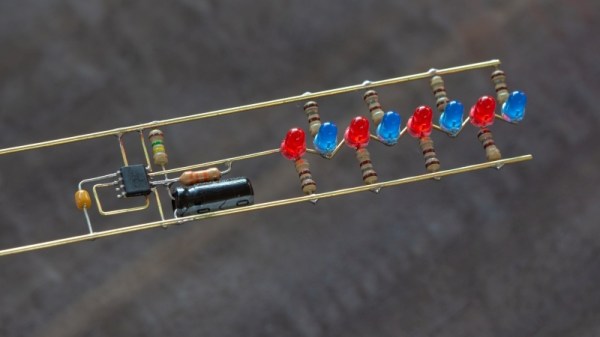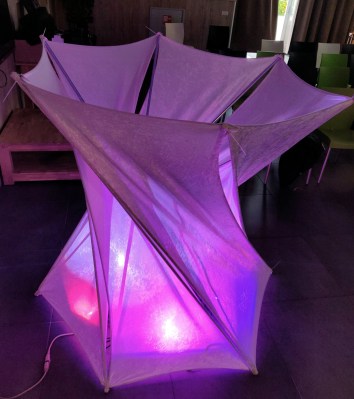Depending on how you look at it, the Internet turned 50 years old last week. On October 29, 1969, the first message was transmitted between two of the four nodes that made up ARPANET, the Internet’s predecessor network. ARPANET was created after a million dollars earmarked for ballistic missile defense was diverted from the Advanced Research Projects Agency budget to research packet-switched networks. It’s said that ARPANET was designed to survive a nuclear war; there’s plenty of debate about whether that was a specific design goal, but if it was, it certainly didn’t look promising out of the gate, since the system crashed after only two characters of the first message were sent. So happy birthday, Internet, and congratulations: you’re now old enough to start getting junk mail from the AARP.
Good news for space nerds: NASA has persuaded Boeing to livestream an upcoming Starliner test. This won’t be a launch per se, but a test of the pad abort system intended to get astronauts out of harm’s way in the event of a launch emergency. The whole test will only last about 90 seconds and never reach more than 1.5 kilometers above the White Sands Missile Range test site, but it’s probably a wise move for Boeing to be as transparent as possible at this point in their history. The test is scheduled for 9:00 AM Eastern time — don’t forget Daylight Savings Time ends this weekend in most of the US — and will air on NASA Television.
Speaking of space, here’s yet another crowd-sourced effort you might want to consider getting in on if you’re of an astronomical bent. The Habitable Exoplanet Hunting Project is looking for a new home for humanity, and they need more eyes on the skies to do it. An introductory video explains all about it; we have to admit being surprised to learn that the sensitive measurements needed to see exoplanets transiting their stars are possible for amateur astronomers, but it seems doable with relatively modest equipment. Such are the advances in optics, CCD cameras, and image processing software, it seems. The project is looking for exoplanets within 100 light-years of Earth, perhaps on the hope that a generation ship will have somewhere to go to someday.
 Space may be hard, but it’s nothing compared to running a hackerspace right here on Earth. Or at least it seems that way at times, especially when those times include your building collapsing, a police raid, and being forced to operate out of a van for months while searching for a new home, all tragedies that have befallen the Cairo Hackerspace over the last few years. They’re finally back on their feet, though, to the point where they’re ready to host Egypt’s first robotics meetup this month. If you’re in the area, stop by and perhaps consider showing off a build or even giving a talk. This group knows a thing or two about persistence, and they’ve undoubtedly got the coolest hackerspace logo in the world.
Space may be hard, but it’s nothing compared to running a hackerspace right here on Earth. Or at least it seems that way at times, especially when those times include your building collapsing, a police raid, and being forced to operate out of a van for months while searching for a new home, all tragedies that have befallen the Cairo Hackerspace over the last few years. They’re finally back on their feet, though, to the point where they’re ready to host Egypt’s first robotics meetup this month. If you’re in the area, stop by and perhaps consider showing off a build or even giving a talk. This group knows a thing or two about persistence, and they’ve undoubtedly got the coolest hackerspace logo in the world.
And finally, no matter how bad your job may be, it’s probably not as bad as restoring truck batteries by hand. Alert reader [rasz_pl] tipped us off to this video, which shows an open-air shop in Pakistan doing the dirty but profitable work of gutting batteries and refurbishing them. The entire process is an environmental and safety nightmare, with used electrolyte tossed into the gutter, molten lead being slung around by the bucketful, and not a pair of safety glasses or steel-toed shoes (or any-toed, for that matter) to be seen. But the hacks are pretty cool, like pouring new lead tabs onto the plates, or using a bank of batteries to heat an electrode for welding the plates together. We’ve talked about the recyclability of lead-acid batteries before and how automated plants can achieve nearly 100% reuse; there’s nothing automated here, though, and the process is so labor-intensive that only three batteries can be refurbished a day. It’s still fascinating to watch.
Continue reading “Hackaday Links: November 3, 2019” →




















